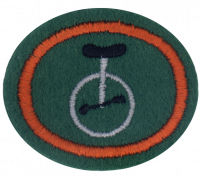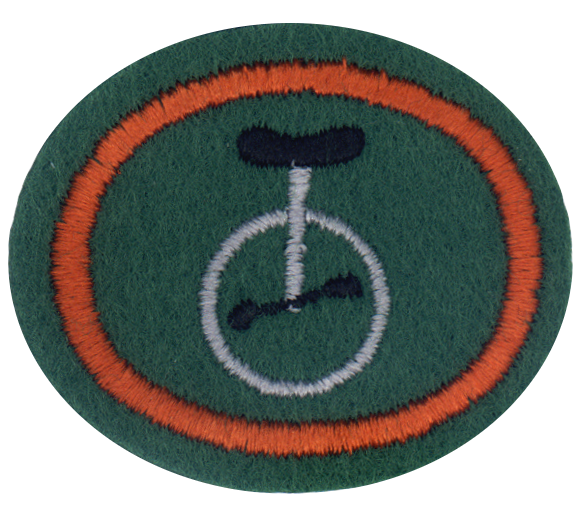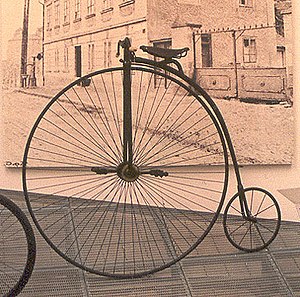Especialidades JA/Monociclo/Respostas
1
2
2a
Mounting the unicycle without having to hold on to anything.
2b
Basically sitting on your unicycle with little or no movement, but not dismounted.
2c
UnPlanned Dismount aka falling off.
3
4
5
The unicycle's history began before the invention of the bicycle. The Comte De Gaye first developed unicycles during the late 18th century. His device, called a celerifere, was a wooden horse that had two wheels joined by a wooden beam. Germany's Baron von Drais improved the design by adding a steering mechanism, introducing his Draisienne or "Hobby Horse" in 1818. Kirkpatrick Macmillan, a Scottish blacksmith, added cranks and pedals to the rear wheel in 1839, and called it the Velocipede. The first mass-produced riding machine, the Michaux Velocipede, was designed in 1863. In 1866, James Starley developed the penny-farthing, a bicycle with a very large front wheel and a small rear wheel.
One theory of the advent of the unicycle is based on the popularity of the penny-farthing (or "Ordinary") during the late 19th century. Since the pedal and cranks were connected directly to the front axle, the rear wheel would go up in the air and the rider would be moved slightly forward. Many penny-farthing owners discovered they could dispense with the frame and just ride the front wheel and handlebars. Evidence for this theory of development can reportedly be found in pictures from the late 19th century showing unicycles with large wheels.
Over the years, unicycle enthusiasts have inspired manufacturers to create new designs, such as seatless ("ultimate wheel") and tall ("giraffe") unicycles. During the late 1980s some extreme sportsmen took an interest in the unicycle and off-road unicycling (MUni) was born.
6
7
This will take some practice, so get practicing.



